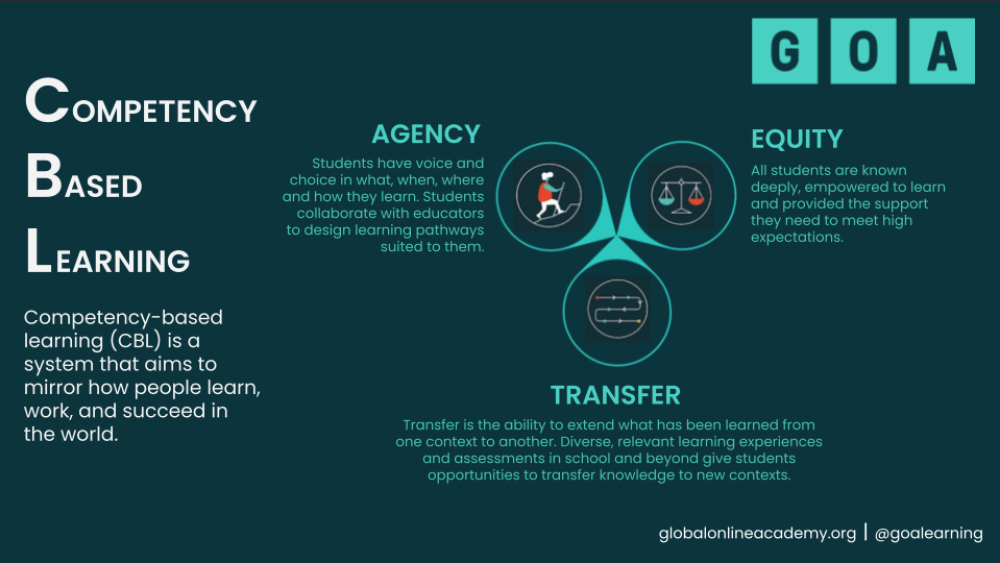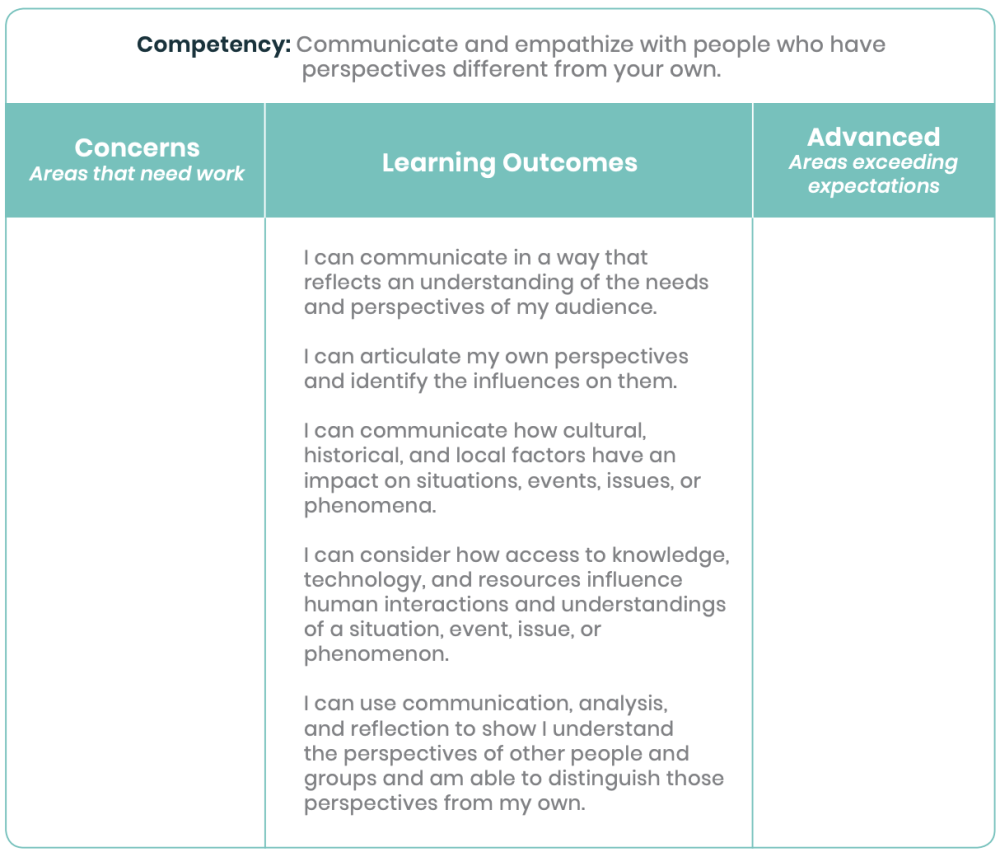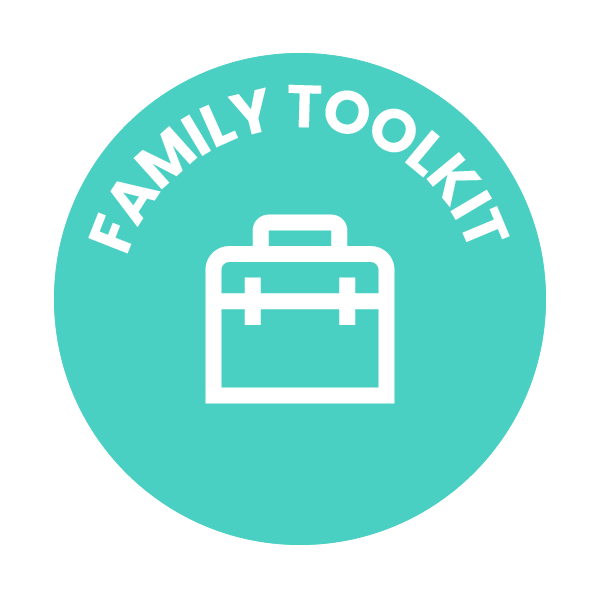Why Competency-Based Learning?: A Primer on CBL for Families
In his video on mastery learning, Sal Khan asks the audience to imagine building a house using the pace of many math classrooms: You have two weeks to work on the foundation, and the inspector gives that foundation an 80%. Although there is 20% that didn’t pass inspection, now we need to spend two weeks on the first floor. Before you know it, the house has collapsed. We wouldn't build houses this way, yet this is the way we ask most students to learn.
At GOA, we know our students succeed most when they:
have a voice and choice in what, when, and how they learn
are provided the support they need to succeed with high expectations, and
learn through diverse, relevant learning experiences
To align with these priorities, GOA has been working toward Competency-Based Learning (CBL) since 2016. For parents and guardians, the core value of CBL is that it demands that education be personalized to each student.
What Is CBL?
The goal of CBL is for students to lead their own learning, to be able to learn at their own pace, and to be equipped with the skills they need to succeed in the future.
CBL (you may have also heard it called mastery- or proficiency-based learning) is a framework for education that mirrors how people learn, work, and live in the world. Students lead their own learning and are assessed based on their ability to show that they have mastered a specific skill or content from the course, rather than the amount of time they've spent in it. Through CBL, every student can build course knowledge and lifelong learning skills in a way that works best for them.
CBL focuses on developing skills that are transferable to real-world situations and provides support and resources for students based on their individual needs. It prioritizes transferable skills, such as problem-solving, critical thinking, curiosity, empathy, and collaboration — skills that will still be relevant to your student 10 years from now, even if the course content they are learning is no longer relevant to their lives. Developing these skills leads to long-term retention, facilitates future learning, and allows students to apply them to issues facing their lives and families, their communities, and the world well beyond the course. All decisions about course curriculum and instruction are made to support these broad skills.

The ability to learn quickly with new tools and transfer that knowledge into new contexts is more important than ever. The recent introduction of generative artificial intelligence, such as ChatGPT, is creating opportunities for new ways of learning and provides additional access to building knowledge, self-assessment, and time-saving resources. These AI tools also make it essential that we have authentic assessments in the classroom, where our students can produce excellent coursework that demonstrates what they are learning.
What Does Teaching Look Like?
CBL allows for a variety of different teaching methods, such as through a specific leading question, problem, or experience, where students have the chance to use the information and practice the skills they’ve learned. At GOA, for example, a student’s teacher may provide individual coaching and guidance throughout a project — from choosing a topic; fusing research, interviews of experts, and surveys; and presenting that info to an authentic audience.
Student agency in how and when they learn is central to the CBL experience. For example, at GOA, students check in with their teachers and peers through Zoom weekly to connect, but they also participate in asynchronous discussions through text, voice, or video. This allows students to build relationships, share ideas, and reflect, compose, and engage with the rigorous course content at a pace that works for the individual student’s learning and social style.
CBL also ensures students are actively engaged in learning and not just passively receiving information. Rather than a one-size-fits-all approach, students are empowered daily to make important decisions about their learning experiences in collaboration with their teachers, such as how they will create, demonstrate, and apply knowledge.
What Does Assessment Look Like?
In CBL — and at GOA — assessment is a meaningful, positive, and empowering experience for students. Rather than just delivering a grade at the end of an assignment or test, CBL provides students with specific, relevant, and actionable feedback based on their individual learning needs and course goals. This consistent feedback gives students the time and space to revisit assessments and concepts in order to incorporate that feedback and demonstrate their growth.
Feedback is based on goals and skills (we call them “competencies” and “learning outcomes”) relating to both specific course content and life outside of school (see image for an example of learning outcomes). This feedback ensures students know exactly what they are learning, why they are learning it, and how they can demonstrate mastery of a skill in the course.

For example, at GOA, students have multiple opportunities to demonstrate they have mastered a skill and can revisit an assignment or quiz as often as the course structure allows. They can self-assess and see growth in each skill as they continue with the course through a series of descriptors (Advanced, Mastering, Developing, or Insufficient Evidence) rather than letter grades or percentage scores on every assignment. And the amount of time it takes a student to acquire a skill is not a factor in their assessment.
What Does the Student Experience Look Like?
Providing students with the "opportunity to make important decisions about what, when, where, and how they learn" promotes agency and is at the core of CBL. Courses are designed with projects and assessments that offer students voice and choice in what course materials they focus on as well as how they engage in the learning. For example, GOA courses often provide students voice and choice through playlists of articles, videos, podcasts, and more to explore (and revisit!) asynchronously. Having the opportunity to lean into their specific interests and prioritize the type of media that works best for them builds confidence and a desire to continue learning.
Another core part of CBL is its promotion of equity, where all students are known deeply by their teachers and peers, are empowered to learn, and are provided the support they need to meet high expectations. Equity and empowerment in the classroom ensure student success regardless of marginalized identity, background, or systemic barriers and allows students to “engage in courageous conversations, take risks, and get things wrong,” leading to social-emotional learning and wellness outside of school.
For parents and guardians, advocating for a CBL environment means your students have the opportunity to learn in a flexible environment that prioritizes their agency in learning. Your students will also be better prepared for the ever-changing demands of the world and are encouraged to continue to learn and grow throughout their lives.
For more, see:
Supporting Your Student with Online Learning? Here Are Five Things You Need to Know

This post is part of our Family Toolkit. The purpose of the Toolkit is to inform families about the what, why, and how of online learning and to support families in navigating online learning with their students.
GOA serves students, teachers, and leaders and is comprised of member schools from around the world, including independent, international, charter, and public schools. Learn more about Becoming a Member. Our professional learning opportunities are open to any educator or school team. Follow us on LinkedIn and Twitter. To stay up to date on GOA learning opportunities, sign up for our newsletter.
